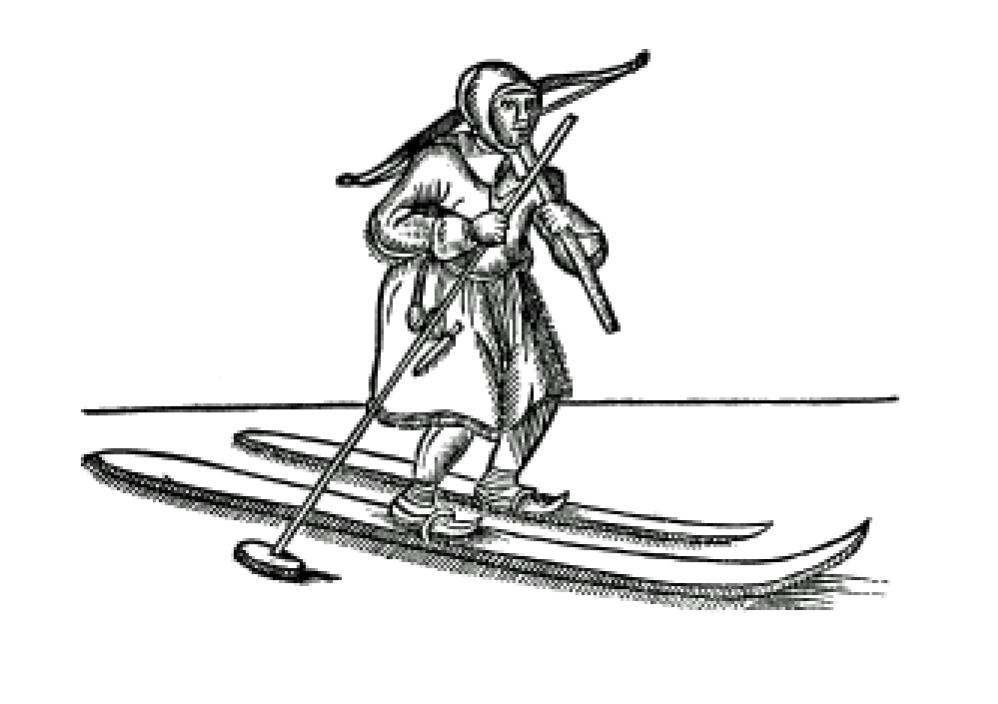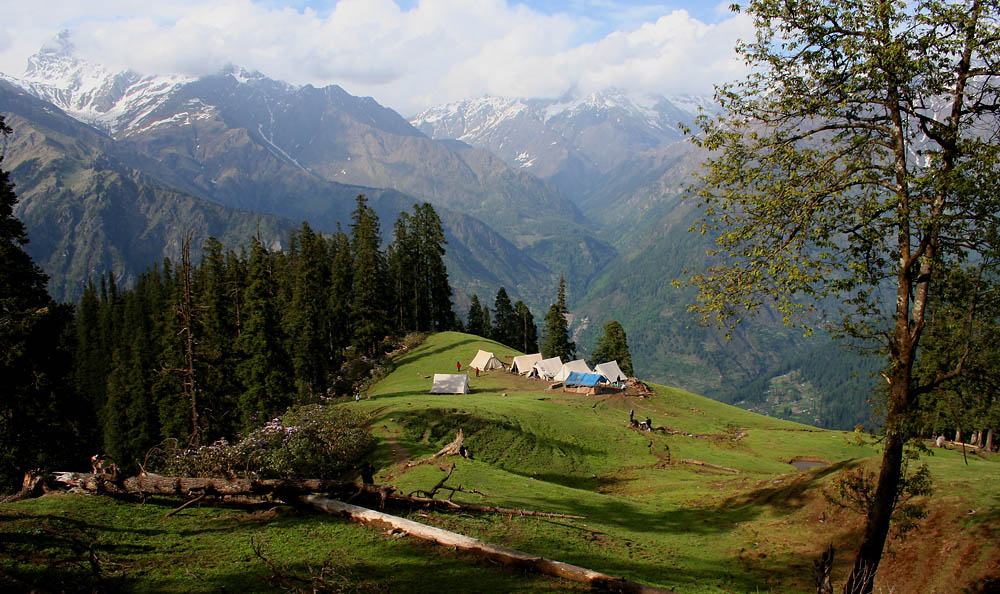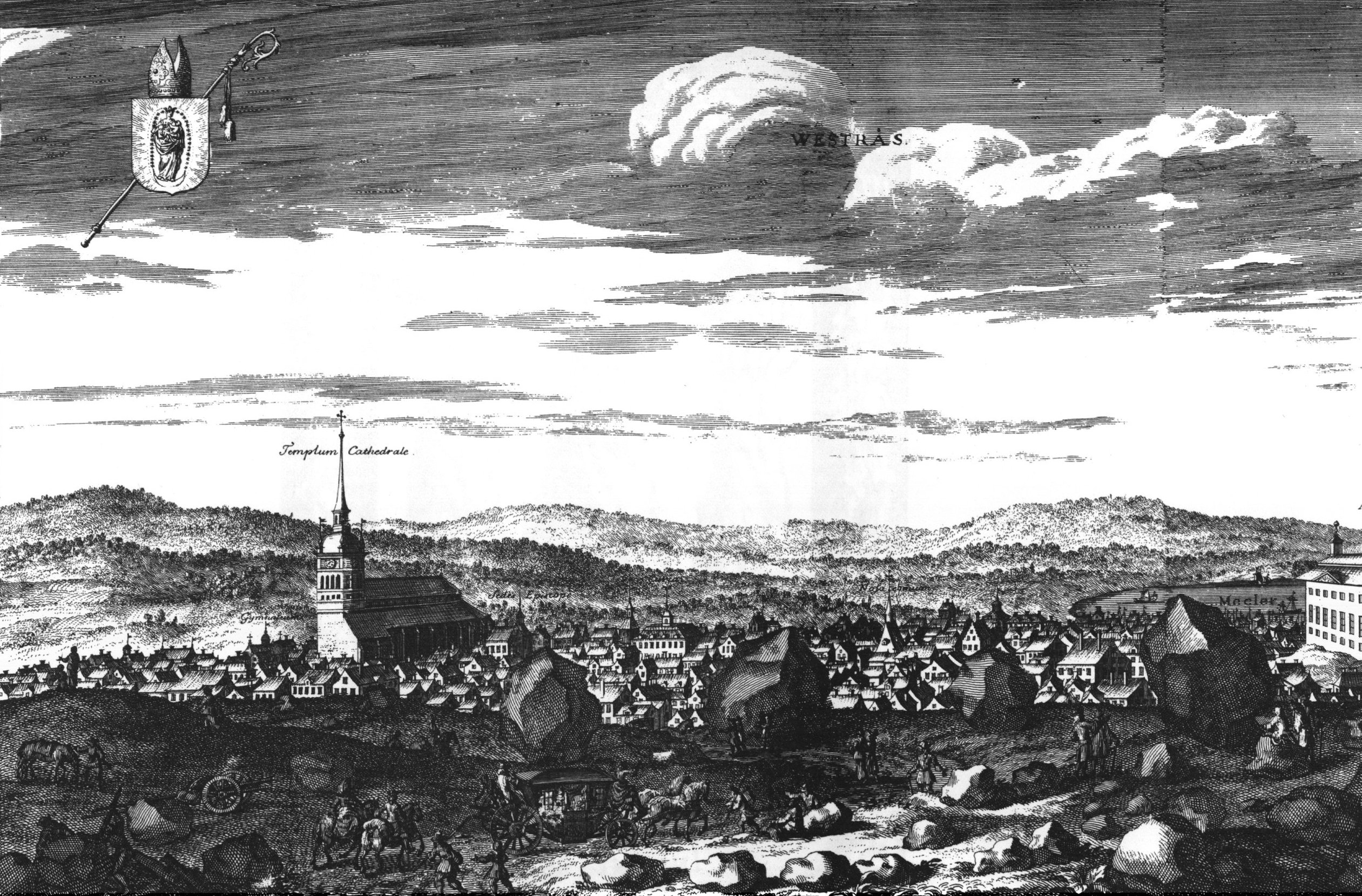|
Elljusspår
An floodlit trail (Norwegian: Lysløype) (Swedish: Elljusspår) is an electrically illuminated trail, often completely or partly in a forest. Trails During seasons with bare ground the floodlit trails are used for among other jogging and walking. They often take the form of landscaped trails with gravel or woodchips as a surface layer. In wintertime skiing trails are groomed on many of them, if the snow conditions allow it. During this time, when the snow is groomed, jogging and walking is strongly discouraged. Sweden Most of the floodlit trails were constructed during the 1970s. , there are about 1700 illuminated trails in Sweden. A common length of an electric light trail in Sweden is about . Gallery File:20060909 hokasen elljusspar.jpg, A floodlit trail outside Hökåsen in Västerås, Sweden, with a typical light fixture for such trails. File:20060909 hokasen elljusspar markering.jpg, Floodlit trails often have way markings to ease navigation. File:ElljusspåretB.JPG ... [...More Info...] [...Related Items...] OR: [Wikipedia] [Google] [Baidu] |
Cross-country Skiing
Cross-country skiing is a form of skiing where skiers rely on their own locomotion to move across snow-covered terrain, rather than using ski lifts or other forms of assistance. Cross-country skiing is widely practiced as a sport and recreational activity; however, some still use it as a means of transportation. Variants of cross-country skiing are adapted to a range of terrain which spans unimproved, sometimes mountainous terrain to groomed courses that are specifically designed for the sport. Modern cross-country skiing is similar to the original form of skiing, from which all skiing disciplines evolved, including alpine skiing, ski jumping and Telemark skiing. Skiers propel themselves either by striding forward (classic style) or side-to-side in a skating motion (skate skiing), aided by arms pushing on ski poles against the snow. It is practised in regions with snow-covered landscapes, including Europe, Canada, Russia, the United States, Australia and New Zealand. Competiti ... [...More Info...] [...Related Items...] OR: [Wikipedia] [Google] [Baidu] |
Winter
Winter is the coldest season of the year in polar and temperate climates. It occurs after autumn and before spring. The tilt of Earth's axis causes seasons; winter occurs when a hemisphere is oriented away from the Sun. Different cultures define different dates as the start of winter, and some use a definition based on weather. When it is winter in the Northern Hemisphere, it is summer in the Southern Hemisphere, and vice versa. In many regions, winter brings snow and freezing temperatures. The moment of winter solstice is when the Sun's elevation with respect to the North or South Pole is at its most negative value; that is, the Sun is at its farthest below the horizon as measured from the pole. The day on which this occurs has the shortest day and the longest night, with day length increasing and night length decreasing as the season progresses after the solstice. The earliest sunset and latest sunrise dates outside the polar regions differ from the date of the winte ... [...More Info...] [...Related Items...] OR: [Wikipedia] [Google] [Baidu] |
Outdoor Recreation
Outdoor recreation or outdoor activity refers to recreation done outside, most commonly in natural settings. The activities that encompass outdoor recreation vary depending on the physical environment they are being carried out in. These activities can include fishing, hunting, backpacking, and horseback riding — and can be completed individually or collectively. Outdoor recreation is a broad concept that encompasses a varying range of activities and landscapes. Outdoor recreation is typically pursued for purposes of physical exercise, general wellbeing, and spiritual renewal. While a wide variety of outdoor recreational activities can be classified as sports, they do not all demand that a participant be an athlete. Rather, it is the collectivist idea that is at the fore in outdoor recreation, as outdoor recreation does not necessarily encompass the same degree of competitiveness or rivalry that is embodied in sporting matches or championships. Competition generally is less ... [...More Info...] [...Related Items...] OR: [Wikipedia] [Google] [Baidu] |
Falun
Falun () is a city and the seat of Falun Municipality in Dalarna County, Sweden, with 37,291 inhabitants in 2010. It is also the capital of Dalarna County. Falun forms, together with Borlänge, a metropolitan area with just over 100,000 inhabitants. Falun was originally famous for its copper mine, and is today an important service and industrial city even though the mine is closed (since 1992). Faluån is a river, flowing through the city, separating it into two sides. Falu copper mine is located on one of the sides which during many centuries was one of Sweden's main business. This side of the river was usually called "the mining side", where not many plants grew due to the toxic smoke which contaminated the soil. On the other side of the river, where the smoke did not reach, set many large villas, which made this side to be called "the delightful side". The centre of Falun consists of classical pedestrian streets with small shops. In 1998, the city reclaimed the award of "the ... [...More Info...] [...Related Items...] OR: [Wikipedia] [Google] [Baidu] |
Hosjö, Falun
Hosjö () is a suburb and parish in Falun, Sweden. Hosjö forms the most eastern part of the city and consists mostly of houses, with some apartments. In Hosjö, there is a grocery store, news agency, school, preschools, petrol station, pizzeria, some sporting facilities and industries (2005). The parish has previously broken away from the old ''Vika Parish'' and houses roughly 3000 residents (2005). Hosjö Church (previously, ''Hosjö Chapel'') is a Falu red, wooden church that was completed in 1663, thanks to voluntary work and donations from residents in Hosjö. Hosjö is primarily a place where people live, so travel to other Falu suburbs and central Falun is common. The suburb is positioned between two lakes, Hosjön and Runn, and can also be subdivided into different areas, such as Hosjöstrand, Backberget, Central Hosjö, Uddnas, Karlslund, Skutudden, and Hosjöholmen. School Hosjö School A school is an educational institution designed to provide learning space ... [...More Info...] [...Related Items...] OR: [Wikipedia] [Google] [Baidu] |
Trail Blazing
Trail blazing or way marking is the practice of marking paths in outdoor recreational areas with signs or markings that follow each other at certain, though not necessarily exactly defined, distances and mark the direction of the trail. A blaze in the beginning meant "a mark made on a tree by slashing the bark" (''The Canadian Oxford Dictionary''). Originally a waymark was "any conspicuous object which serves as a guide to travellers; a landmark" (''Oxford English Dictionary''). There are several ways of marking trails, including paint, carvings, affixed markers, posts, flagging, cairns, and crosses, with paint being the most widely used. Types of signage Paint A painted marking of a consistent shape or shapes (often rectangular), dimension and colour or combination of colours is used along the trail route. The system by which blazes are used to signify turns and endpoints in trails (see below) strongly favors the use of paint blazes. European countries usually use systems ... [...More Info...] [...Related Items...] OR: [Wikipedia] [Google] [Baidu] |
Västerås
Västerås ( , , ) is a city in central Sweden on the shore of Mälaren, Lake Mälaren in the province of Västmanland, west of Stockholm. The city had a population of 127,799 at the end of 2019, out of the municipal total of 154,049. Västerås is the seat of Västerås Municipality, the capital of Västmanland County and an episcopal see. History Västerås is one of the oldest cities in Sweden and Northern Europe. The name originates from ''Västra Aros'' (West Aros), which refers to the river mouth of Svartån. The area has been populated since the Nordic Viking Age, before 1000 CE. In the beginning of the 11th century it was the second largest city in Sweden, and by the 12th century had become the seat of the bishop. Anundshög is located just outside the City of Västerås. Anundshög is Sweden's largest burial mound. "Hög" is derived from the Old Norse word ''haugr'' meaning mound or barrow. It was built about 500 CE and is over wide and is almost high. In the ensu ... [...More Info...] [...Related Items...] OR: [Wikipedia] [Google] [Baidu] |
Hökåsen
Hökåsen is a locality situated in Västerås Municipality, Västmanland County Västmanland County ( sv, Västmanlands län) is a county or ''län'' in central Sweden. It borders the counties of Södermanland, Örebro, Gävleborg, Dalarna and Uppsala. The county also has a stretch of shoreline towards Mälaren (Sweden's ..., Sweden with 2,956 inhabitants in 2010. References Populated places in Västmanland County Populated places in Västerås Municipality {{Västmanland-geo-stub ... [...More Info...] [...Related Items...] OR: [Wikipedia] [Google] [Baidu] |
Swedish Ski Association
The Swedish Ski Association ( sv, Svenska Skidförbundet) is a sports governing body for skiing in Sweden. It was established in Sundsvall on 11 December 1908 as the Swedish Cross-Country Skiing Association ( sv, Svenska skidlöpningsförbundet) before changing name in 1911. The headquarters were originally located in Stockholm before relocating to Falun on 3 May 2001. Their objective is to get as many people as possible to discover the joy and benefits of being active in the snow. Covering and arranging national and major international championships, youth activities, encouraging exercise, improving public health and through this making social impact. Chairmen *1908-1910 - Fritz af Sandeberg *1910-1915 - C G A Lindencrona *1915-1922 - Sven Hermelin *1922-1948 - Sixtus Janson *1948-1952 - Björn Kjellström *1952-1961 - Sigge Bergman *1961-1965 - Karl Arne Wegerfelt *1965-1974 - Nils Stenberg *1974-1977 - Stig Synnergren *1977-1982 - Arne Jägmo *1982-1996 - Sven Lars ... [...More Info...] [...Related Items...] OR: [Wikipedia] [Google] [Baidu] |
Cross-country Skiing Trail
A cross-country skiing trail or ''loipe''From german: Loipe or ''Langlaufloipe'', pl. –''n'', ''loipe'' is a loanword in English-language travel guides, referring to cross-country ski trails in Europe. It is a Germanization of the Norwegian word, ''løype,'' which originally meant a steep channel used to slide logs downhill into the valleys and which in turn came from the verb ''laupe'' ("run") whose causative ''løype,'' can translate as "to get running". is a route that has been laid out, constructed and maintained specifically for cross-country skiing. Trails may extend point-to-point, but are more typically loops for recreational use or for competition. Until the mid-20th Century, trails were tracked by the passage of skiers. More recently, snow groomers set tracks for classic skiing and smooth lanes for skate skiing. Recreational Cross-country ski venues often comprise a system of trails or ''loipes'' of varying length and difficulty that loop back to a starting point. Of ... [...More Info...] [...Related Items...] OR: [Wikipedia] [Google] [Baidu] |
Ski Trail - Panoramio (12)
A ski is a narrow strip of semi-rigid material worn underfoot to glide over snow. Substantially longer than wide and characteristically employed in pairs, skis are attached to ski boots with ski bindings, with either a free, lockable, or partially secured heel. For climbing slopes, ski skins (originally made of seal fur, but now made of synthetic materials) can be attached at the base of the ski. Originally intended as an aid to travel over snow, they are now mainly used recreationally in the sport of skiing. Etymology and usage The word ''ski'' comes from the Old Norse word which means "cleft wood", "stick of wood" or "ski". In Old Norse common phrases describing skiing were ''fara á skíðum'' (to travel, move fast on skis), ''renna'' (to move swiftly) and ''skríða á skíðum'' (to stride on skis). In modern Norwegian the word ''ski'' has largely retained the Old Norse meaning in words for split firewood, wood building materials (such as bargeboards) and roundpole fence ... [...More Info...] [...Related Items...] OR: [Wikipedia] [Google] [Baidu] |
Norwegian Language
Norwegian ( no, norsk, links=no ) is a North Germanic language spoken mainly in Norway, where it is an official language. Along with Swedish and Danish, Norwegian forms a dialect continuum of more or less mutually intelligible local and regional varieties; some Norwegian and Swedish dialects, in particular, are very close. These Scandinavian languages, together with Faroese and Icelandic as well as some extinct languages, constitute the North Germanic languages. Faroese and Icelandic are not mutually intelligible with Norwegian in their spoken form because continental Scandinavian has diverged from them. While the two Germanic languages with the greatest numbers of speakers, English and German, have close similarities with Norwegian, neither is mutually intelligible with it. Norwegian is a descendant of Old Norse, the common language of the Germanic peoples living in Scandinavia during the Viking Age. Today there are two official forms of ''written'' Norwegian, (literally ... [...More Info...] [...Related Items...] OR: [Wikipedia] [Google] [Baidu] |
.jpg)






